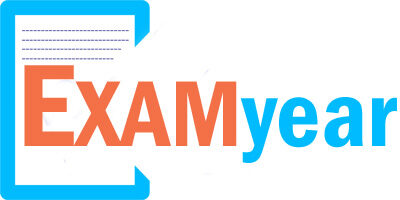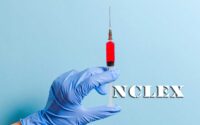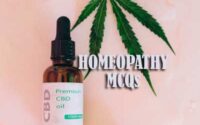Microbiology MCQ
Find the direct download link for medical microbiology mcq previous year question paper pdf in the section below. Aspirants who are looking for medical microbiology mcqs Previous Papers can find in the table below.

Solve bacteriology mcqs question and answers enclosed in the previous year’s question papers Pdf below. Share the URL with friends who are looking for food microbiology mcq question paper pdf. Practices microbiology multiple choice questions and answers Papers?
Need more general microbiology multiple choice questions Model Question Papers, then stay. We will update few more food microbiology mcq Question Papers PDF after we find them in different resources.
Download the microbiology mcqs online test Papers along with Answers and prepare well to show your best in the exam. Bacteriology mcqs question papers with answers pdf are given here. Microbiology mcqs with answers pdf previous papers help the applicants in preparation.
MCQ on Microbiology
1. Grafts between two genetically non-identical members of the same species are known as :
(1) Autografts
(2) Isografts
(3) Allografts
(4) Xenografts
2. Which of the following is NOT known to be transmitted by blood?
(1) Human immunodeficiency virus
(2) Hepatitis B virus
(3) Hepatitis C virus
(4) Treponema pallidum
3. All fungi have ergosterol in their cell membrane except one of the followings :
(1) Histoplasma capsulatum
(2) Cryptococcus neoformans
(3) Pneumocystis jirovecii
(4) Aspergillus niger
4. Emmons’ modified sabourand dextrose agar medium has one of the followings pH.
(1) 5.6
(2) 6.8
(3) 7.4
(4) 8.2
5. The ‘mitosporic fungi’ are placed in one of the phyla as their sexual state is not yet known :
(1) Zygomycota
(2) Ascomycota
(3) Basidiomycota
(4) Deuteromycetes
6. In KOH wet mount, acute-angle septate branching hyphae are seen in one of diseases :
(1) Candidiasis
(2) Aspergiliosis
(3) Zygomycosis
(4) Histoplasmosis
7. Which of the following groups of antifungal agent acts through cytochrome P-450 ?
(1) Polyenes
(2) Griseofulvin
(3) Azoles
(4) Allylamines and benzylamines
8. White piedra is caused by one of following fungi :
(1) Malassezia furfur
(2) Hortaea wernekii
(3) Piedraia hortae
(4) Trachosporon species
9. Which of the following fungi is geophilic dermatophyte ?
(1) Microsporum gypseum
(2) Microsporum equinum
(3) Microsporum persicolor
(4) Microsporum canis
10. Id reaction is seen in patients suffering from :
(1) Dermatophytosis
(2) Histoplasmosis
(3) Blastomycosis
(4) Coccidioidomycosis
11. Which of the following fungal or bacterial species gives golden-yellow colored fluorescence under Wood’s lamp examination ?
(1) Microsporum audouinil
(2) Trichophyton schoenleinii
(3) Malassezia furfur
(4) Corynebacterium minutissimum
12. Keloid mycosis is name given to one of the following fungal infections :
(1) Paracoccidioidemycosis
(2) Coccidioidomycosis
(3) Lobomycosis
(4) Histoplasmosis
13. Which of the following fungi is a ‘Select agent’ of bioterrorism ?
(1) Histoplasma capsulatum
(2) Coccidioides immitis
(3) Paracoccidioides bracesiliensis
(4) Blastomyces dermatitidis
14. Hair-Bait technique depends on the fact that all dermatophytes :
(1) Grow on hair
(2) Grow at 25 °C
(3) Are Keratinophillic
(4) Reside in soil
15. ‘Cigar shaped bodies’ refers to one of the following :
(1) Granules seen in mycetoma
(2) Any yeast cell
(3) Yeast phase of sporothrix schenckii
(4) Hyphal form of sporothrix schencki
16. Asteroid body is usually seen in one of the following infections :
(1) Chromoblastomycosis
(2) Sporotrichosis
(3) Phaeohypomycosis
(4) Eumycetoma
17. Reynolds-Braude phenomenon is seen in one of the following yeast-like fungus:
(1) Cryptococcus neoformans
(2) Candida albicans
(3) Geotrichum candidum
(4) Trichosporon Cutaneum
18. Toxonomically, Pneumocystis Jirovecil is classified into one of the following fungal phyla :
(1) Zygomycota
(2) Ascomycota
(3) Basidiomycota
(4) Deuteromycetes
19. An agglutination test for detection of antigen in serum or cerebrospinal fluid is frequently used in one of the following diseases :
(1) Candidiasis
(2) Cryptococcosis
(3) Histoplasmosis
(4) Toxoplasmosis
20. Which of azoles is effective in treatment of Zygomycetes infection ?
(1) Fluconazole
(2) Intraconazole
(3) Voriconazole
(4) Posaconazole
| Previous Year Question | Practice Set |
| Important Question | Viva Question |
| Sample Papers | Quiz |
| Model Papers | MCQs |
| Mock Test | Questions and Answers |
21. Which is the commonest fungal agent involved in Otomycosis cases ?
(1) Pseudallescheria boydii
(2) Aspergillus niger
(3) Penicillium species
(4) Candida albicans
22. Which fungal species is involved in aflatoxin production ?
(1) Aspergillus flavus
(2) Aspergillus ochraceus
(3) Claviceps purpurea
(4) Fusarium graminearum
23. Which of the following fungi produces large, smooth sickle shaped macroconidia ?
(1) Fusarium spp.
(2) Acremonium spp.
(3) Paecilomyces spp.
(4) Scopulariopsis spp.
24. The yeast cells in one of the following dimorphic fungi divide by fission and not by budding :
(1) Histoplasma capsulatum
(2) Blastomyces dermatitidis
(3) Paracoccidioides brasiliensis
(4) Penicillium marneffei
25. One of the followings is unique feature of classical histoplasmosis :
(1) Encapsulated yeast cells
(2) Granules containing yeast cells
(3) Intracellular yeast cells
(4) Coenocytic hyphae
26. The phaeoid fungi are demonstrated ! with one of the following special stains :
(1) Gomori’s methenamine silver stain
(2) Masson-fontana stain
(3) Haematoxylin and eosin stain
(4) Periodic-acid Schiff stain
27. All are true about blastomyces dermatitidis except one of the following :
(1) Broad-based yeast cells
(2) Dimorphic nature
(3) Involves lungs and skin
(4) Prevalent in South America
28. Which of the following is NOT TRUE about the rhinosporidiosis ?
(1) It is caused by Rhinosporidium secberi.
(2) Stagnant water is the reservoir of the pathogen.
(3) Mucous membranes of nose and mouth are the mostly infected sites.
(4) It leads to rhinoscleroma
29. Intrinsic resistance to Amphotericin B is seen with which of the following fungi ?
(1) Aspergillus terreus
(2) A. fumigatus
(3) A. nidulans
(4) A. casaliflavus
30. Which one of the following pathogenic fungi multiples intracellularly in reticuloendothelial system ?
(1) Paracoccidioides brasiliensis
(2) Cryptococcus gatti
(3) Histoplasma capsulatum
(4) Monosporium apiospermum
31. Grape like clusters of subspherical microconidia on the terminal branches are the distinguishing feature of :
(1) Trichophyton mentagrophytes
(2) T. tonsurans
(3) T. rubrum
(4) Microsporum nodosum
32. The infection of the skin caused by non-dermatophytic fungi and the cutaneous manifestations of systemic mycoses are known as :
(1) Dermatophytosis
(2) Dermatophytid
(3) Dermatomycosis
(4) Ectothrix
33. Cowdry type A_ inclusion bodies are seen in :
(1) HBV
(2) Herpes Virus
(3) Adenovirus
(4) Pox Virus
34. Both intranuclear and intracytoplasmic inclusion is seen in :
(1) Pox Virus
(2) Herpes Virus
(3) Measles Virus
(4) Mumps Virus
35. Newcastle virus belong to family :
(1) Paramyxo Virus
(2) Calci Virus
(3) Flavi Virus
(4) Filo Virus
36. Ebola virus belongs to:
(1) Picorna viridae
(2) Toga viridae
(3) Flavi viridae
(4) Filo viridae
37. Pocks producing virus can be grown in :
(1) Organ Culture
(2) Choro allantoie membrane
(3) Cell culture
(4) continuous cell line
38. Suck line mice is used for Isolation of
(1) Coxsackie virus
(2) Pox
(3) Herpes
(4) Adenovirus
39. Property of elution is found in
(1) Myxo virus
(2) Toga virus
(3) Parvo virus
(4) Adeno virus
40. Hep-2 cells a type of
(1) Primary cell line
(2) Continuous cell line
(3) Diploid cell strain
(4) Explant culture
41. Haemagglutination done by all virus, except :
(1) Influenza
(2) Rubella
(3) Measles
(4) HPV
42. Bacteriophages are readily counted by
(1) Plaque assay
(2) ELISA
(3) Cell culture
(4) radio immunoassay
43. Which of the following viruses was used for vaccination against small Pox ?
(1) Vaccinia
(2) Small pox
(3) Cow-pox
(4) Buffalo pox
44. Shingles is caused by
(1) Varicella-Zoster virus
(2) Cytomegalo virus
(3) Epstein — Barr Virus
(4) Herpes simplex virus type-1
45. Paul-Bunnell heterophile antibody test aids in the diagnosis of :
(1) Infectious mononucleosis
(2) Chickenpox
(3) Genital heepes
(4) Acute gingivostomatitis



